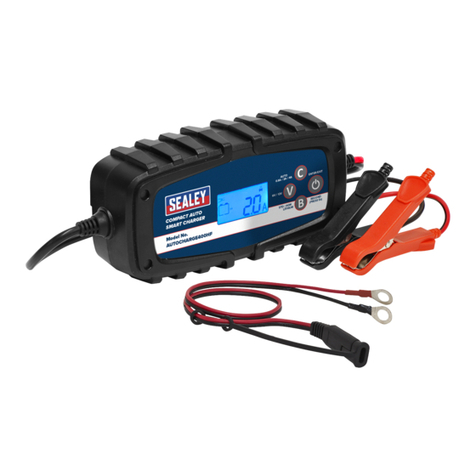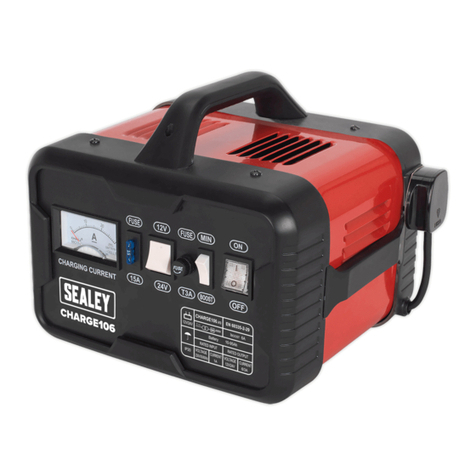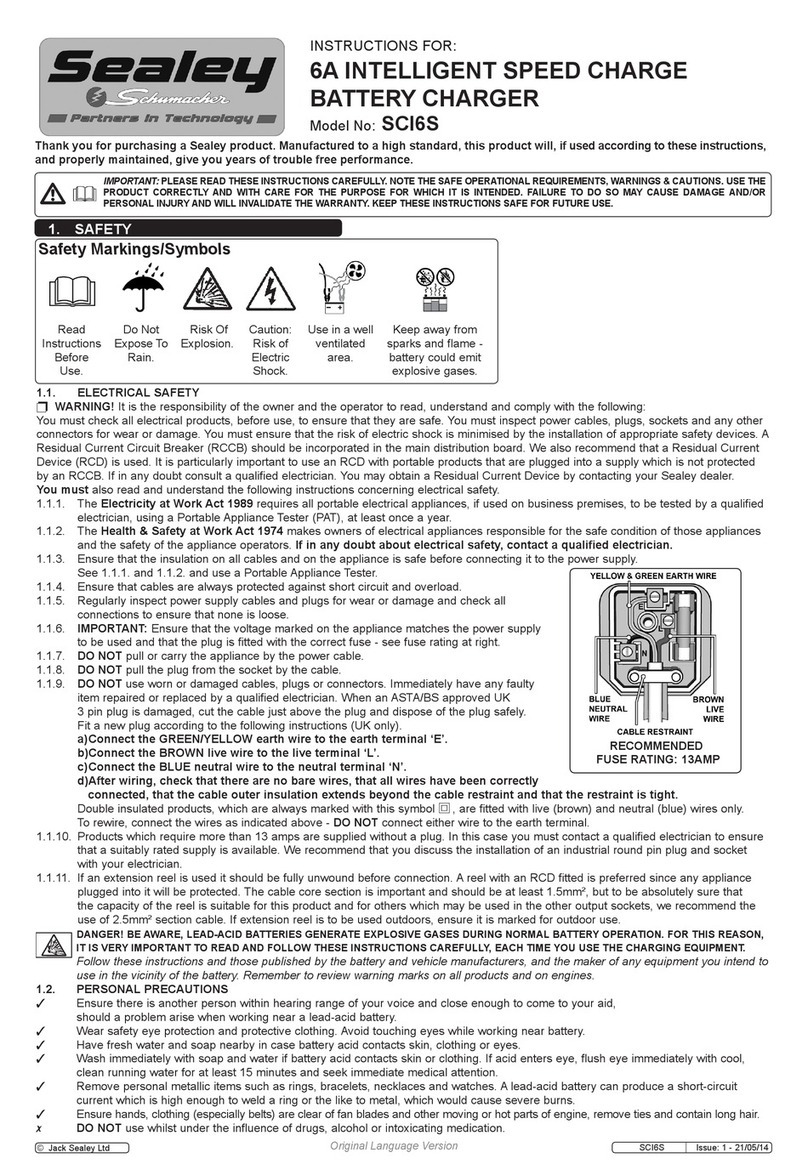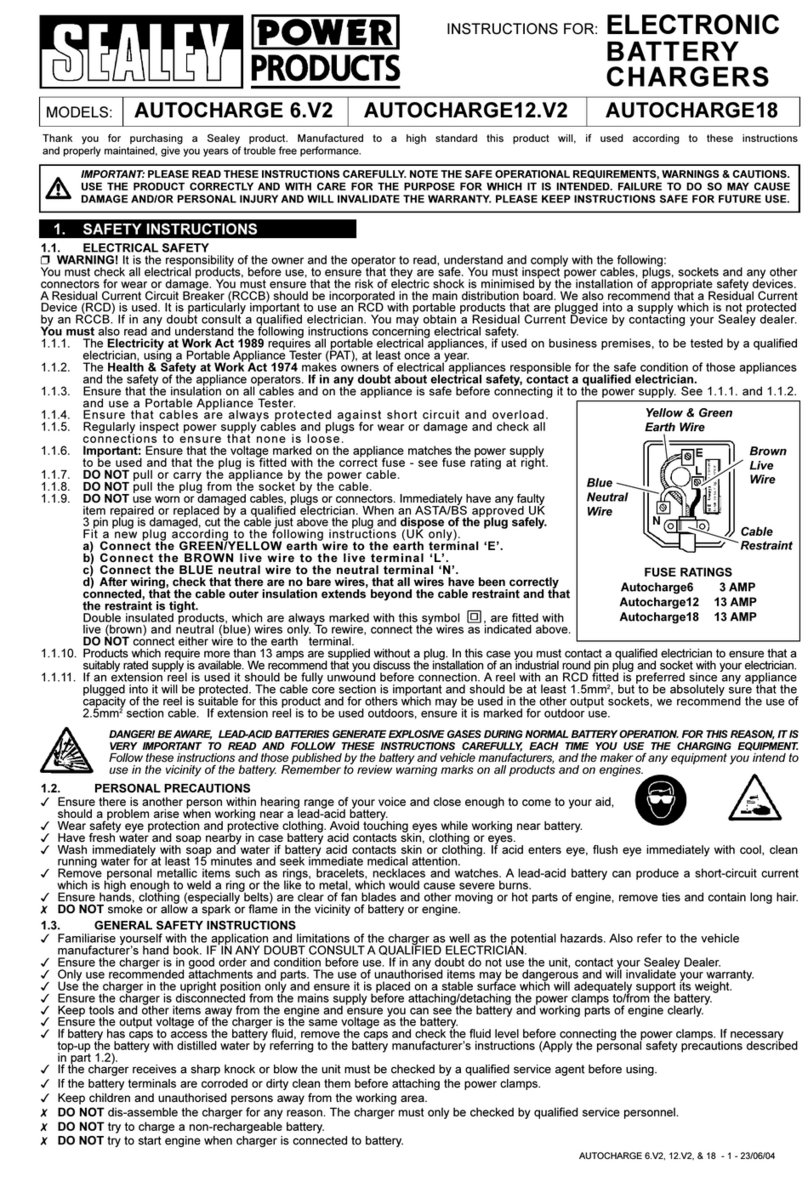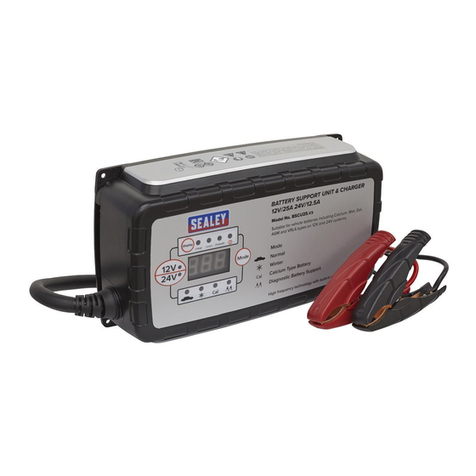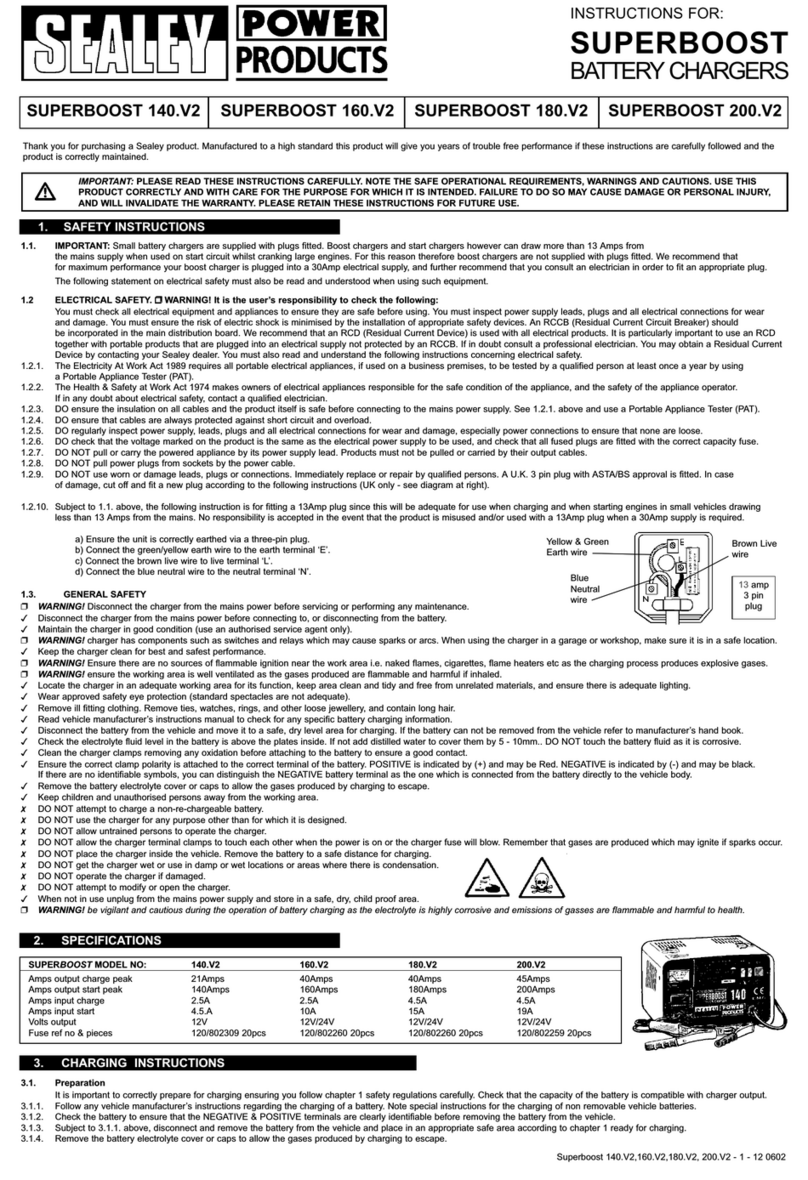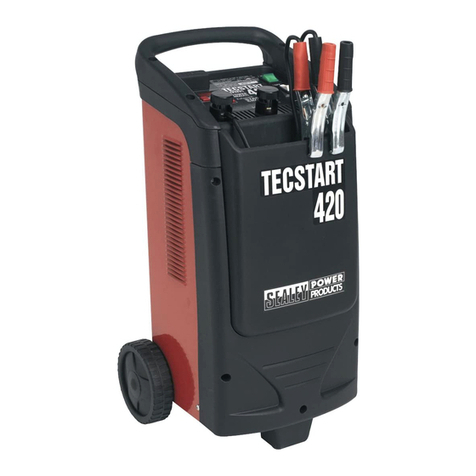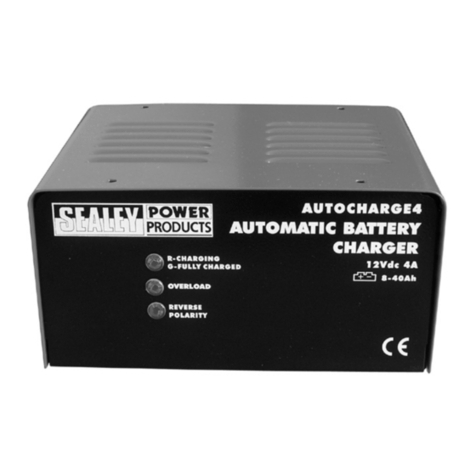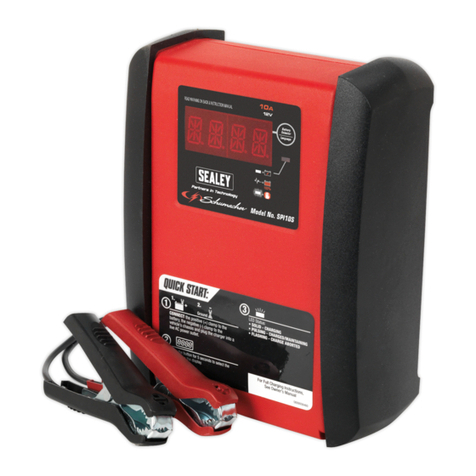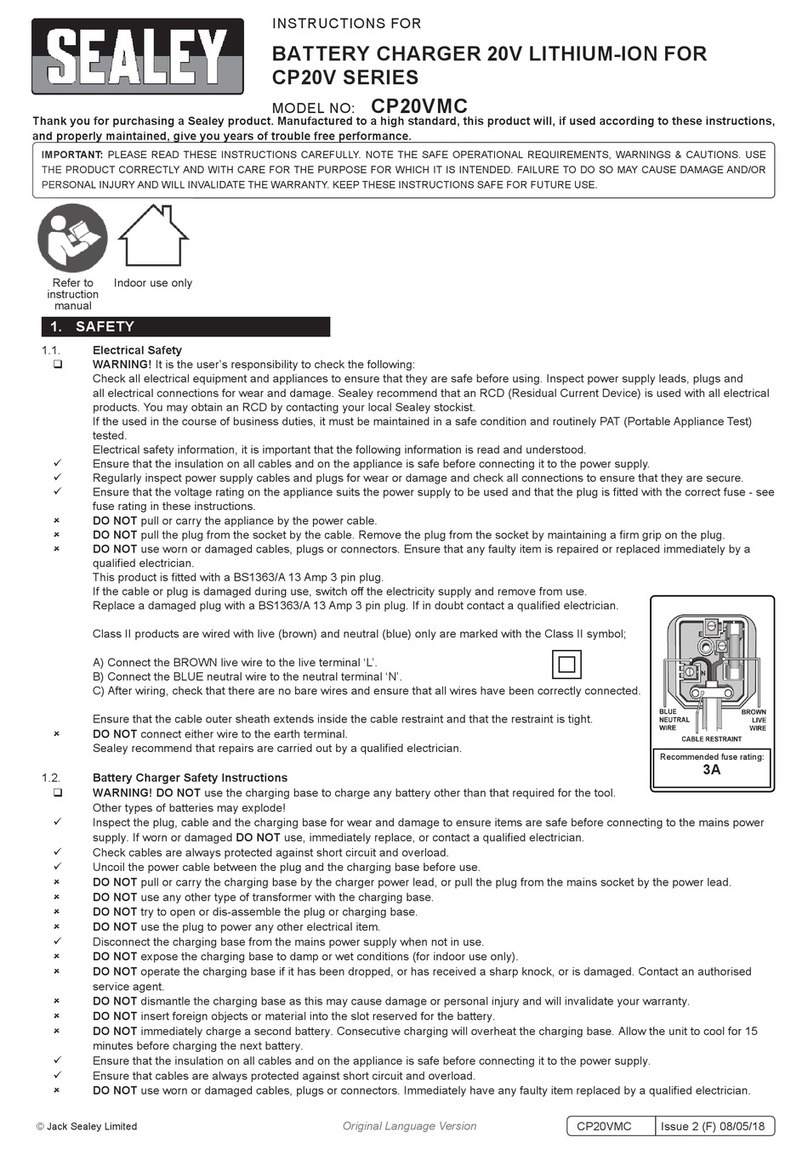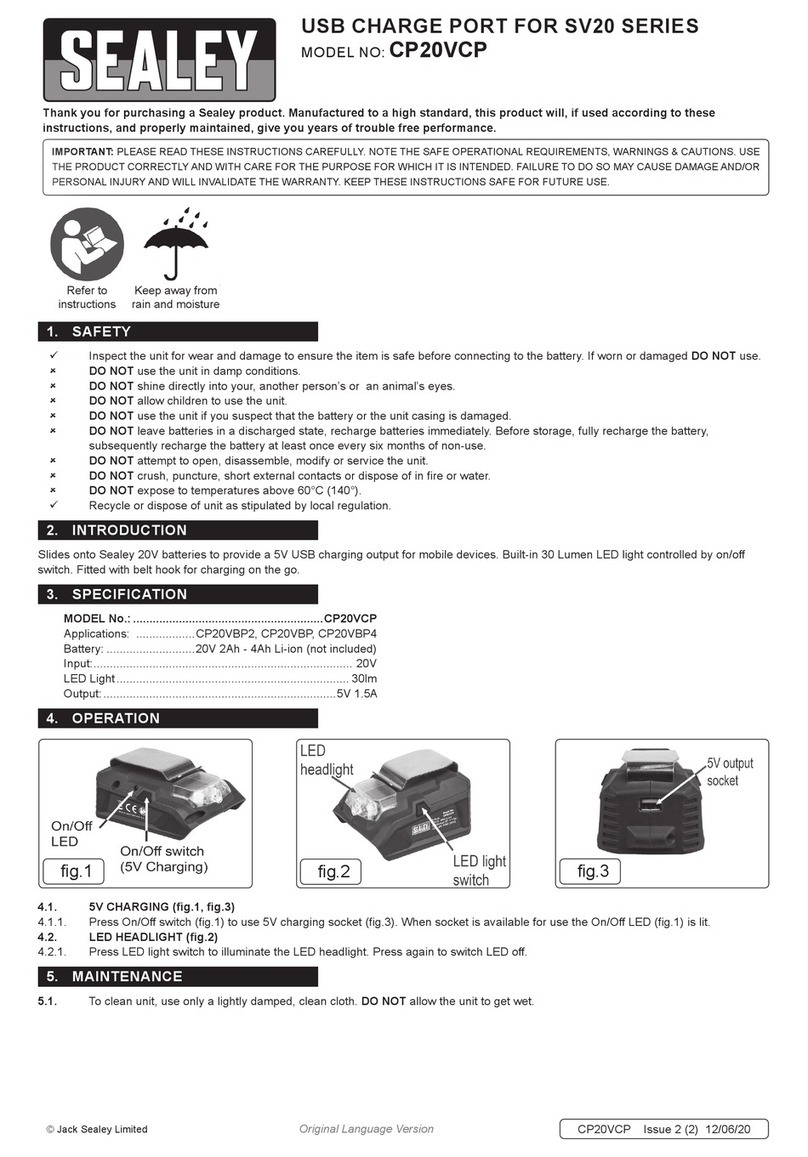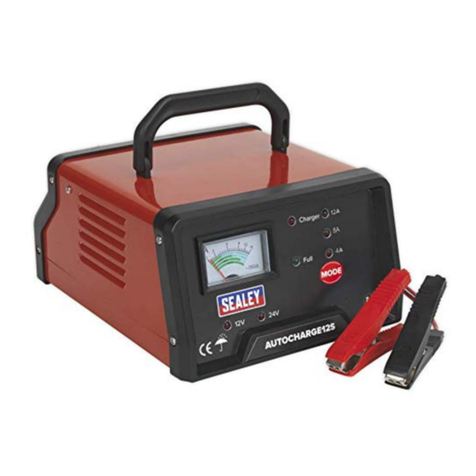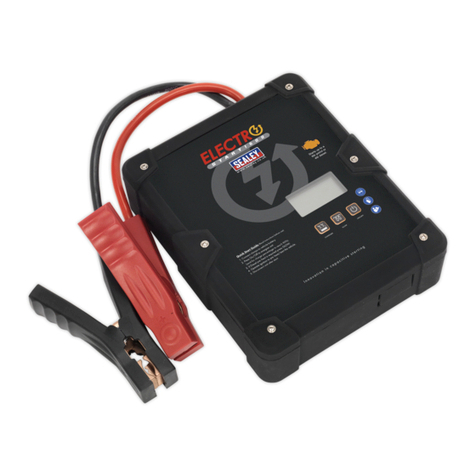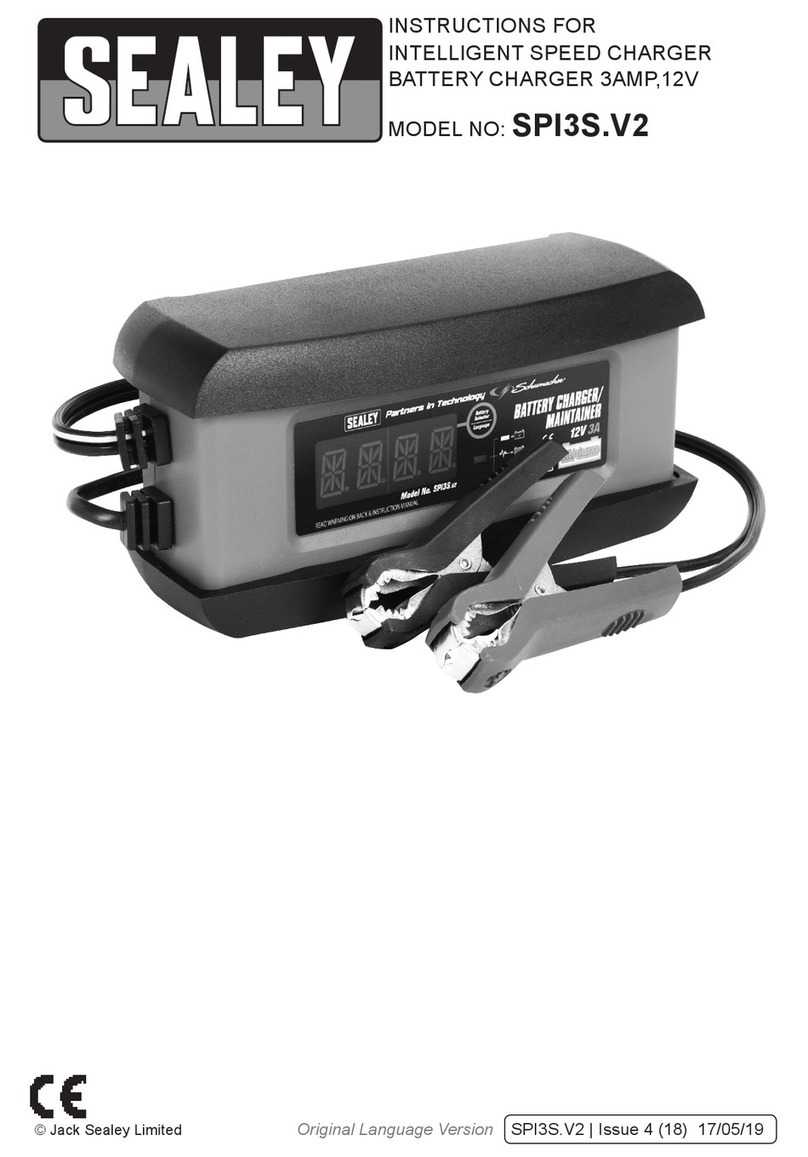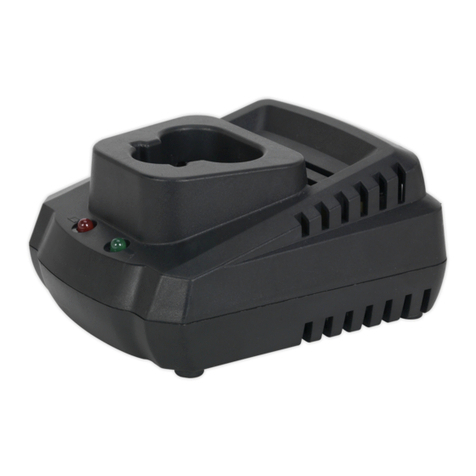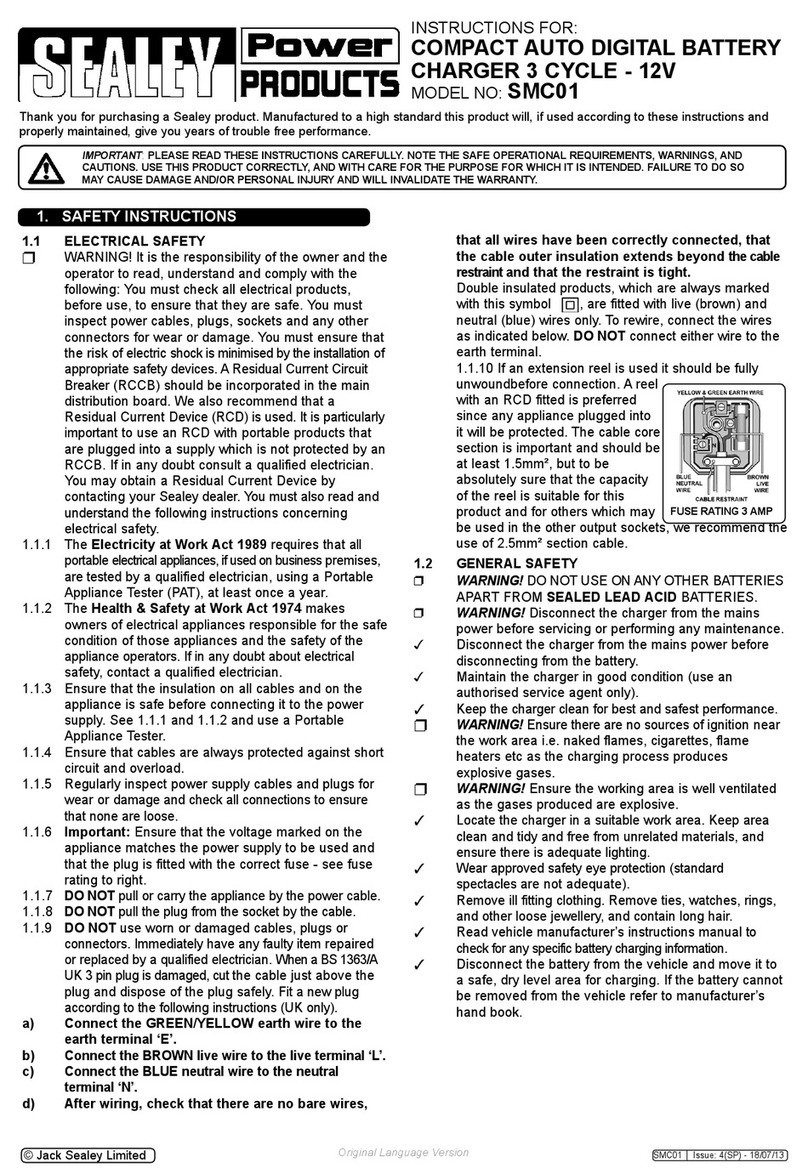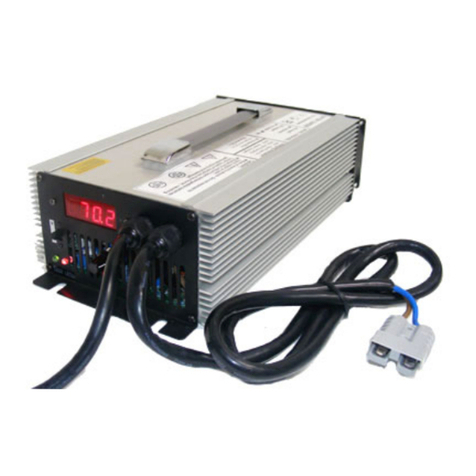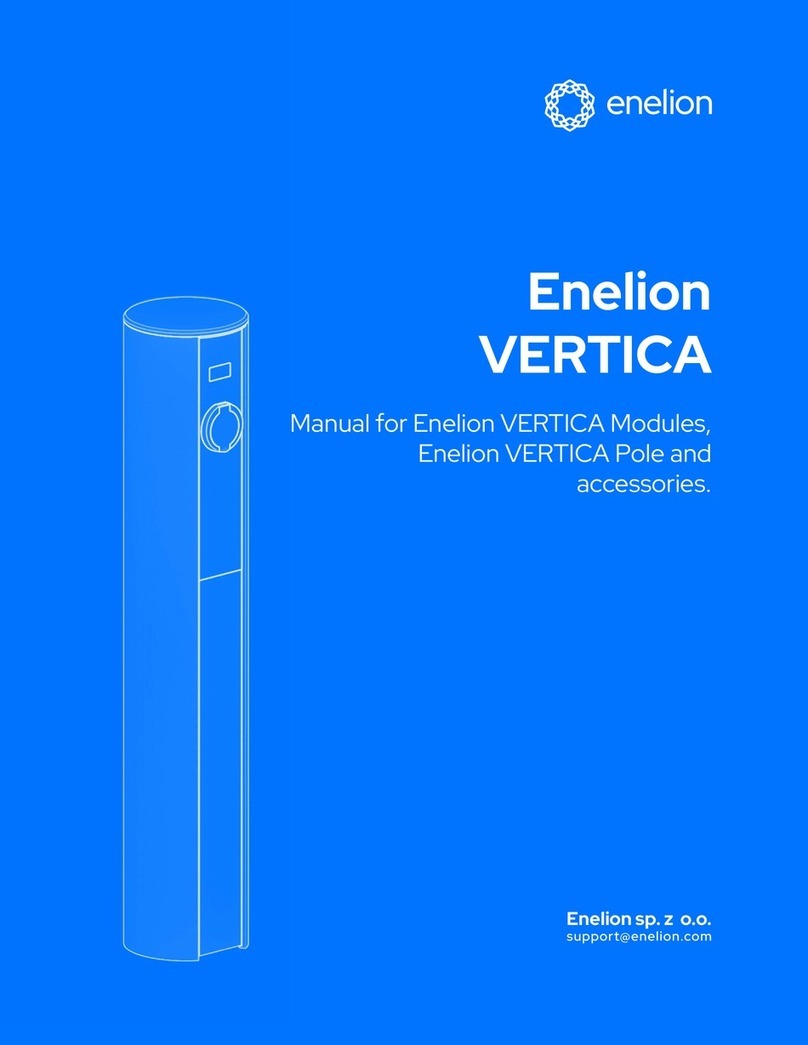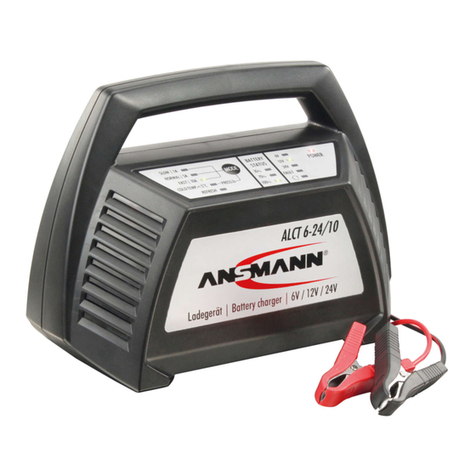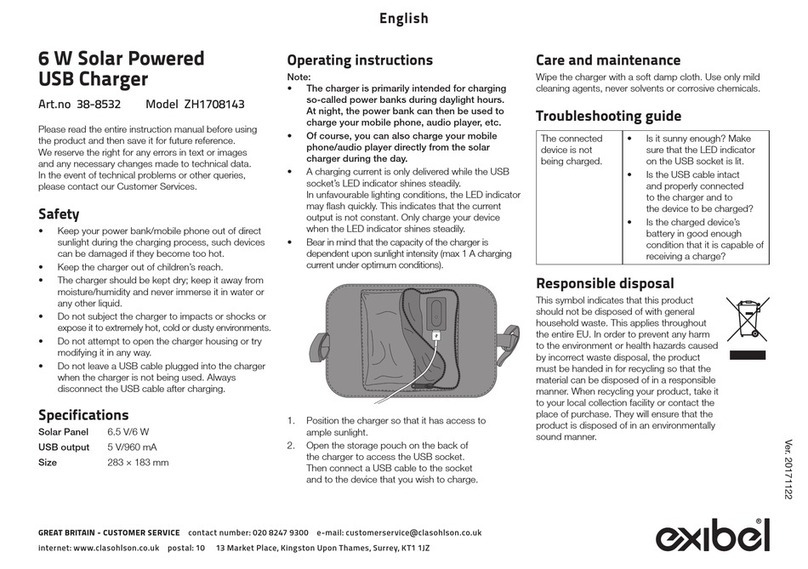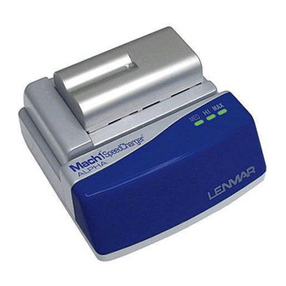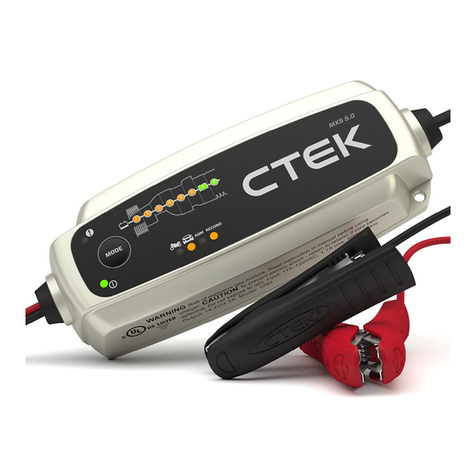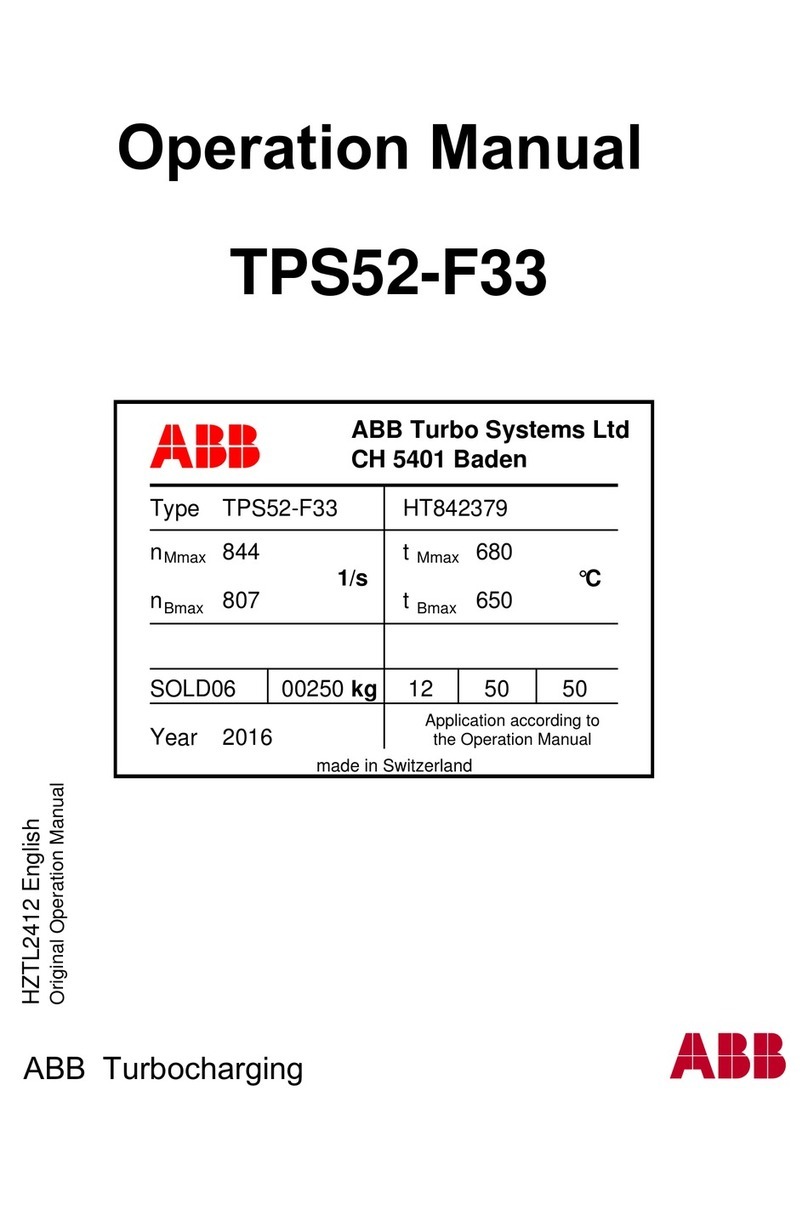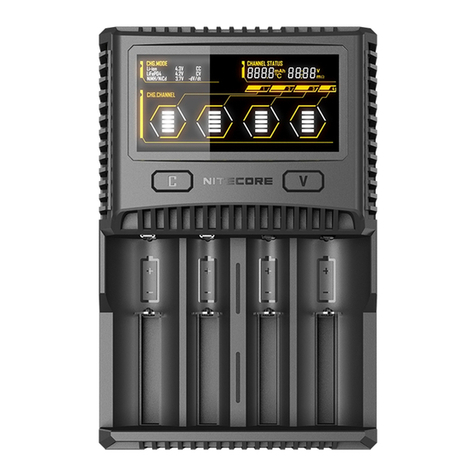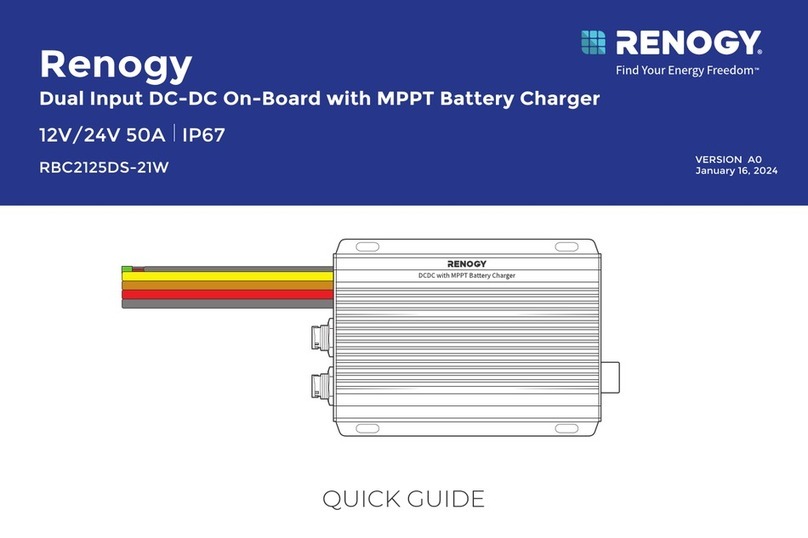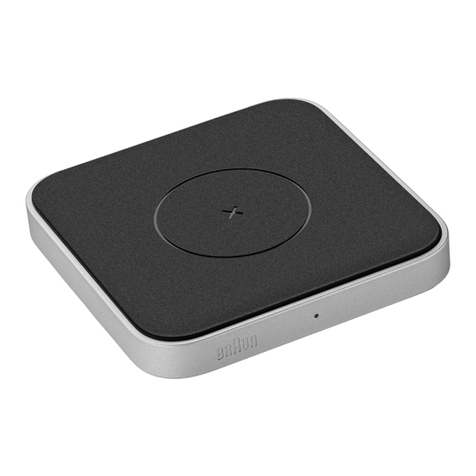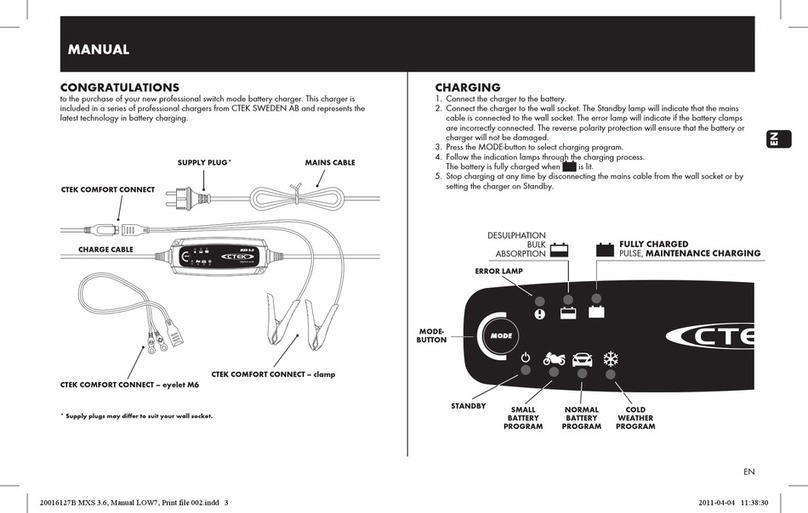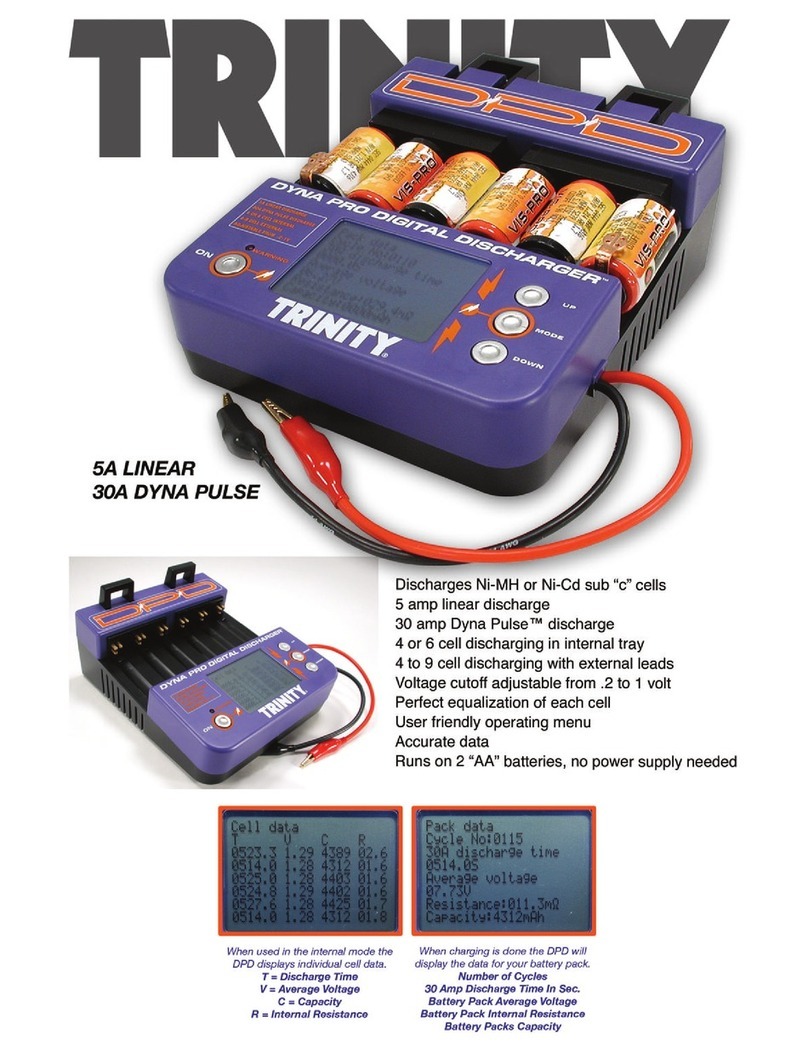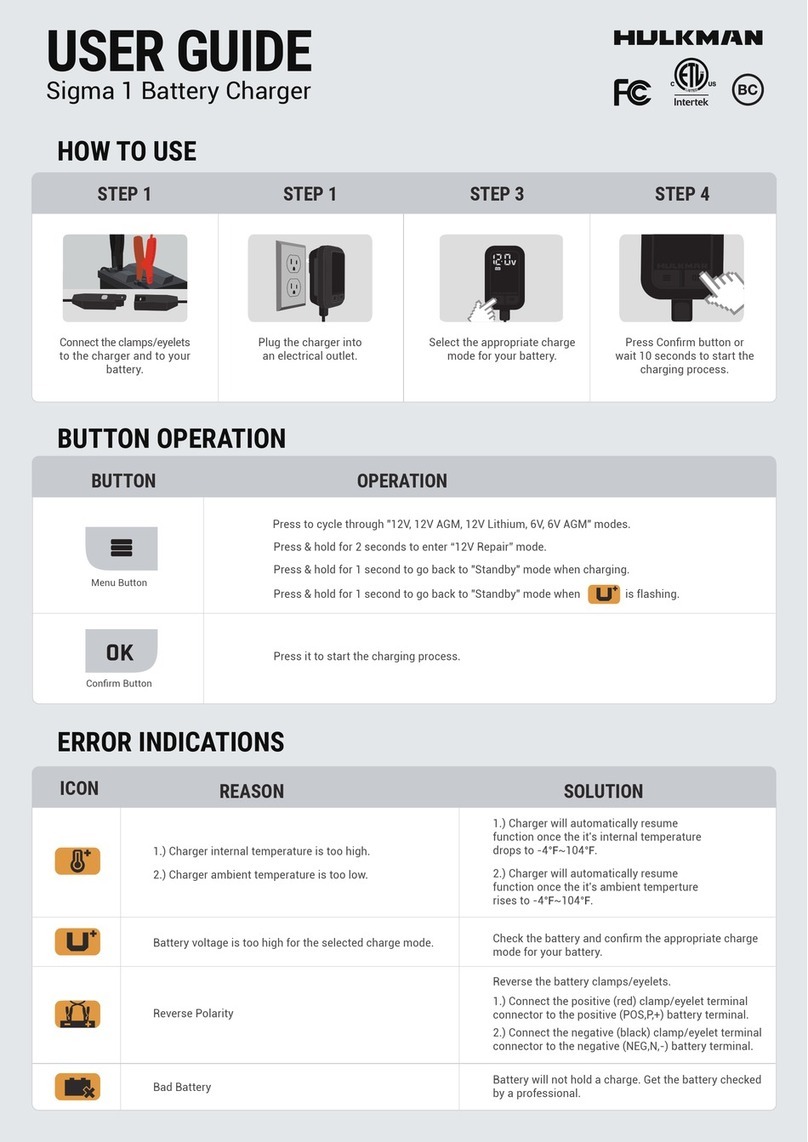
Also refer to the vehicle manufacturer’s hand book. IF IN ANY DOUBT CONSULT A QUALIFIED ELECTRICIAN.
9Ensure the charger is in good order and condition before use. If in any doubt DO NOT use the unit, contact your Sealey stockist.
9 Use the starter/charger in the upright position only and ensure it is placed on a stable surface which will adequately support its weight.
9 Ensure the charger is disconnected from the mains supply before attaching/detaching the power clamps to/from the battery.
9Keep tools and other items away from the engine and ensure you can see the battery and working parts of engine clearly.
9Ensure the output of the charger is the same voltage as the battery.
9If battery has caps to access the battery fluid, remove the caps and check the fluid level before connecting the power clamps.
9If necessary top-up the battery with distilled water by referring to the battery manufacturer’s instructions (Apply the personal safety
9precautions described in part 1.3).
9If the charger receives a sharp knock or blow the unit must be checked by a qualified service agent before using.
9If the battery terminals are corroded or dirty clean them before attaching the power clamps.
9Keep children and unauthorised persons away from the working area.
8DO NOT dis-assemble the charger for any reason. The charger must only be checked by qualified service personnel.
8DO NOT try to charge a non-rechargeable battery.
8DO NOT try to charge battery if battery fluid is frozen.
WARNING! To prevent the risk of sparking, short circuit and possible explosion DO NOT drop metal tools in the battery area, or allow
them to touch the battery terminals.
8DO NOT allow power clamps to touch each other or to make contact with any metallic part of the vehicle.
8DO NOT cross connect power leads from charger to battery. Ensure positive (+/RED) is to positive and negative (-/BLACK) is to negative.
8DO NOT pull the cables or clamps from the battery terminals.
8DO NOT use the charger outdoors, or in damp, or wet locations and DO NOT operate within the vicinity of flammable liquids or gases.
8DO NOT use charger inside vehicle or inside engine compartment.
9Ensure there is effective ventilation to prevent a build-up of explosive gases, and DO NOT cover or obstruct charger ventilation louvres.
8DO NOT use the charger for a task for which it is not designed.
WARNING! DO NOT simultaneously charge batteries of different capacities or discharge levels.
WARNING! If a fuse blows, ensure it is replaced with an identical fuse type and rating. Use only Sealey genuine parts.
9 When not in use, store the charger carefully in a safe, dry, childproof location.
This appliance can be used by children aged from 8 years and above and persons with reduced physical, sensory or mental capabilities or lack of
experience and knowledge if they have been given supervision or instruction concerning use of the appliance in a safe way and understand the
hazards involved. Children shall not play with the appliance. Cleaning and user maintenance shall not be made by children without supervision.
2. i INTRODUCTION
Compact 6/12V dual bank battery charger perfect for automobile, motorcycle and marine workshops. Suitable for charging a variety of batteries,
charger reacts continuously to battery condition and delivers whatever charge rate is required. Two bank charger outputting 2 x 5A depending on
the condition and the charge rate of each battery. constantly regulated voltage patterns allow the battery to be recharged fully and safely without
fear of overcharging. Compatible with all AGM, Gel and VRLA flooded batteries commonly found in everything from automotive and farm equipment
to motorcycles, ATV’s, golf buggies and personal watercraft.
3. SPECIFICATION
MODEL NO. MBC250
INPUT 200-240V AC, 50Hz
OUTPUT VOLTAGE 6V & 12V
CHARGE CURRENT 5A
BATTERY TYPES 6V & 12V lead acid batteries (WET, MF, AGM and GEL)
CHARGING VOLTAGE 14.4V ± 0.25V (for 12V battery) or 7.2V ± 0.20V (for 6V battery)
AMBIENT TEMPERATURE -10°C to +40°C
HOUSING PROTECTION IP65
4. i OPERATION
4.1. PREPARATION
It is important to correctly prepare for charging, ensuring that you follow Section 1 safety regulations carefully. Check that the capacity
of the battery is compatible with the charger output.
4.1.1. Follow any vehicle manufacturer’s instructions regarding battery charging. Note special instructions for in-vehicle charging.
4.1.2. Check polarity of battery posts. A positive (pos, p, +) battery post may have a larger diameter than a negative (neg, n, -) post;
4.1.3. Connect the battery lead plastic plug to the charger / maintainer plastic plug, see g.1.
4.2. BATTERY CHARGING
4.2.1. Follow the battery manufacturer’s recommendations for battery cell caps
during charging. Loosen cell caps if applicable.
4.2.2. Open all battery compartments and ventilate for at least 15 minutes before
plugging into the mains supply.
4.2.3. Connect the battery lead terminal rings or alligator clips directly to the
corresponding battery posts.
4.2.4. Position the RED terminal ring or alligator clip on the POSITIVE post
connector.
4.2.5. Position the BLACK terminal ring or alligator clip on the NEGATIVE post
connector. Make sure all battery connections are tight and clean.
4.2.6. Plug into the mains supply, using a suitably rated heavy duty extension cord.
4.2.7. Short Circuit/Reverse Polarity Protection
If the charger leads are wrongly connected the POWER ON light will ash, see g.2.
4.2.8. The POWER ON indicator will turn off.
Original Language Version
© Jack Sealey Limited MBC250 Issue:1 21/08/18
fig.1

